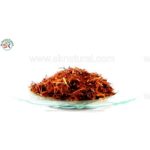Description
Imli, Tamarindus indicus Linn. belongs to family “Caesalpiniaceae”. It is cold and dry in first order/cold in first, dry in second order. Generally, people use its pulp of ripe fruit, seeds, leaves and flowers. Tamarind, a versatile fruit, offers a surprising range of health benefits beyond its culinary uses. People in Indo-Pak subcontinent mainly use it in chutneys, sherbets and as a spice in many dishes.
Other names:
Arabic Name(s): Tamar Hindi
Urdu Name(s): Imli, Tamar-Hindi, Gadamri
English Name(s): Tamarind
Imli pulp uses:
During hot summers, sweet syrup made from tamarind pulp comes to the rescue. It’s believed to be effective against bilious fevers, helping eliminate excess bile from the body. Additionally, it acts as a refrigerant, quenching thirst and providing a cooling sensation. Tamarind pulp syrup can also offer relief for nausea and vomiting, providing some comfort during digestive distress.
For those suffering from scabies and itching (pruritis), tamarind pulp combined with aloe vera and formed into pills may offer relief. Interestingly, physicians consider these pills also effective against heart palpitations of bilious origin. Tamarind’s potential benefits extend beyond specific ailments. They believe it to act as a cardiac and stomach tonic, promoting overall health and potentially inducing a calming effect during periods of high tension. Tamarind may also play a role in post-viral recovery. Physicians think it to be effective in removing toxins that linger in the body after an epidemic or a viral fever.
Imli flower uses:
Physicians consider tamarind seeds and leaves are astringent and may possess antibacterial properties. Traditionally, they included powdered tamarind seeds in electuaries (medicated pastes or confections) to address issues like nocturnal emissions and excessive seminal discharge (spermatorrhea).
Tamarind flowers, with their astringent and sedative properties, can be used to create poultices applied to the eyes for ophthalmia (eye inflammation). Interestingly, when you steep tamarind leaves in water for a considerable time, you can use it as a treatment for bloody diarrhea. You should cool down a hot iron piece in this water before it’s administering.
Imli leaves uses:
Tamarind leaf juice combined with sugar is another traditional remedy used to address dysentery, piles, and burning sensations during urination. Additionally, gargles made with tamarind leaf juice may be beneficial for aphthous ulcers (mouth sores). For infants and children struggling with constipation, tamarind preserve offers a sweet and potentially effective solution.
Sknatural provides you good imli.






Reviews
There are no reviews yet.